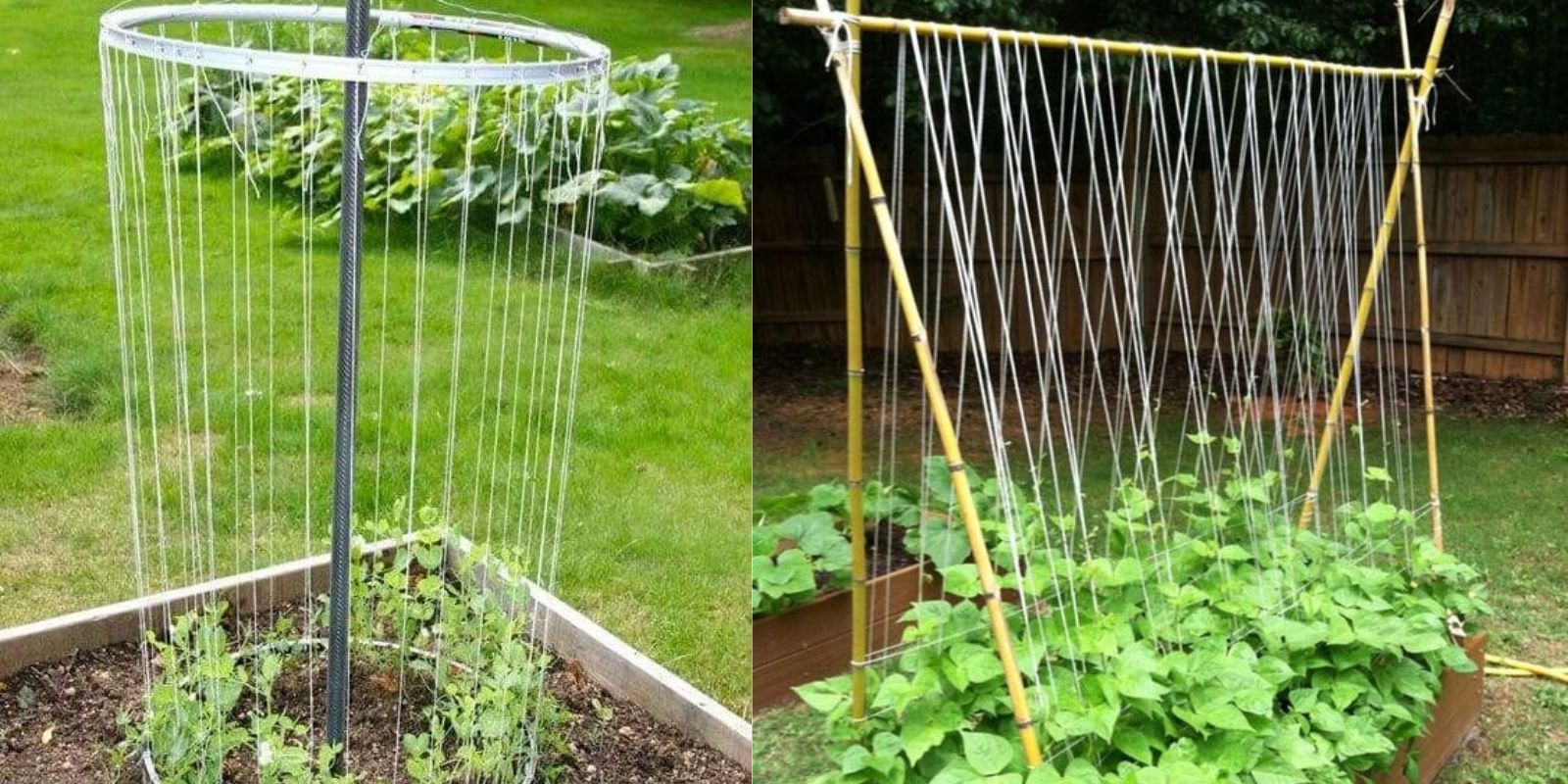Creating a trellis for your garden doesn’t have to break the bank or involve purchasing new materials. Instead, you can craft unique and functional trellises using recycled items, transforming what might be considered waste into beautiful garden structures. Not only does this approach save money, but it also promotes environmental sustainability and adds a personal touch to your outdoor space. Here’s a comprehensive guide to building DIY recycled trellises that will enhance your garden.
Introduction
Incorporating recycled materials into your garden design is both an eco-friendly and economical choice. Recycled trellises are not only functional, supporting climbing plants and adding vertical interest to your garden, but they also showcase your creativity and commitment to sustainability. By using materials that might otherwise end up in a landfill, you contribute to a healthier planet while beautifying your garden.
Step 1: Gather Materials
The first step in creating a recycled trellis is to gather the materials you’ll need. Look around your home and garden for items that can be repurposed.
- Wooden Pallets: Often available for free from local businesses or online marketplaces, wooden pallets can be disassembled and reconfigured into trellises.
- Bamboo Poles: If you have bamboo poles left over from other projects or garden supplies, these make excellent trellis materials.
- Metal Pipes or Fencing: Old metal pipes, fencing, or even wire mesh can be used to create a sturdy trellis structure.
- Unused Ladders: Wooden or metal ladders can be propped up against a wall or used as a freestanding trellis.
Step 2: Design Your Trellis
Once you have your materials, it’s time to design your trellis. Consider the type of plants you’ll be growing and the space where the trellis will be placed.
- Plan the Size: Determine the height and width of your trellis based on the needs of your plants and the available space. For instance, a tall trellis works well for climbing beans or cucumbers.
- Sketch Your Design: Draw a rough sketch of your trellis. Think about how the materials will be arranged and how they will support the plants.
Step 3: Prepare the Materials
Before you start assembling your trellis, prepare your materials to ensure they are clean and in good condition.
- Clean: Remove any dirt, old paint, or rust from the materials. For wooden pallets, sand down rough edges to prevent splinters.
- Repair: Fix any broken or damaged parts. For metal items, ensure there are no sharp edges or rust that could harm plants or users.
Step 4: Assemble the Trellis
With your materials prepared, you can begin assembling your trellis.
- Construct the Frame: Start by creating the basic frame of your trellis. For wooden pallets, you can simply use the pallet as-is or dismantle it and reconfigure the wood. For bamboo poles, use wire or string to tie them together in the desired shape.
- Add Support: If using metal pipes or fencing, secure them in place with screws, bolts, or heavy-duty wire. Ensure that the trellis is stable and can support the weight of the plants.
Step 5: Decorate and Finish
Personalize your recycled trellis to fit your garden’s aesthetic and add finishing touches.
- Paint or Stain: Apply a coat of paint or wood stain to the trellis if desired. This not only enhances its appearance but also protects the materials from the elements.
- Add Decorations: Consider adding decorative elements like hanging planters, lights, or garden art to make your trellis a focal point in your garden.
Step 6: Install in the Garden
Finally, position and install your trellis in your garden.
- Position the Trellis: Place the trellis in a location where it will best support your climbing plants. Consider factors like sunlight, accessibility, and the growth habits of the plants.
- Secure the Trellis: Anchor the trellis securely into the ground. For larger structures, you may need to dig holes and use stakes or concrete to ensure stability.
Tips for Success
- Choose the Right Plants: Select plants that are appropriate for the size and type of trellis you’ve created. Fast-growing climbers like morning glories, peas, and beans are ideal for many trellis designs.
- Regular Maintenance: Check the trellis regularly for any signs of damage or instability. Perform necessary repairs to keep the structure in good condition.
- Creative Reuse: Don’t be afraid to get creative with your materials. Old garden tools, reclaimed wood, or even discarded furniture can be transformed into unique trellises.
Benefits of DIY Recycled Trellises
- Cost-Effective: Using recycled materials reduces the need to purchase new materials, saving you money on garden supplies.
- Eco-Friendly: Repurposing items that would otherwise be thrown away helps reduce waste and lowers your carbon footprint.
- Unique Design: Each recycled trellis is one-of-a-kind, adding a personalized touch to your garden and showcasing your creativity.
Conclusion
Creating a recycled trellis is an excellent way to enhance your garden while being mindful of the environment and your budget. By repurposing materials like wooden pallets, bamboo poles, and metal pipes, you can craft beautiful and functional garden structures that support your plants and add visual interest to your outdoor space. Embrace the challenge of recycling and transform everyday items into garden treasures that reflect your style and commitment to sustainability. With a bit of ingenuity and effort, your garden can thrive with the charm and functionality of DIY recycled trellises. 🌿🛠️

